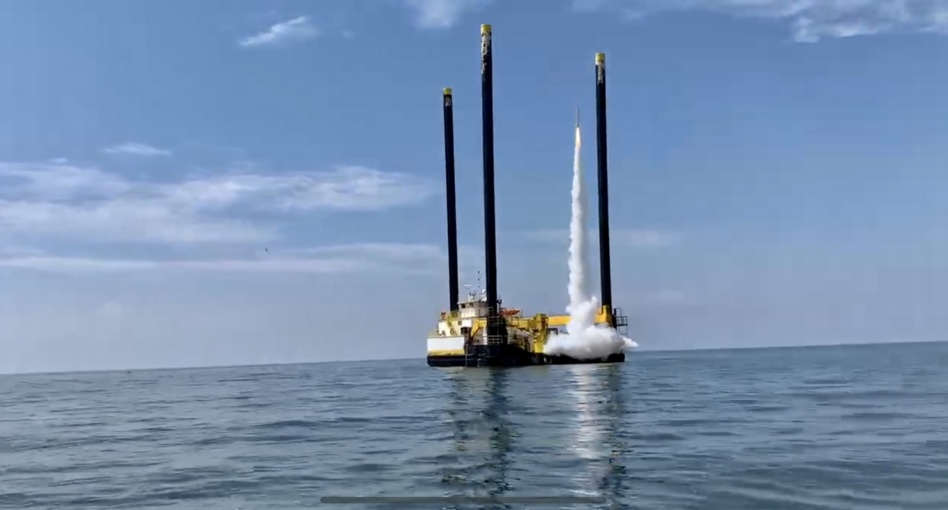When Tom Marotta founded The Spaceport Company last year, he knew he was entering a domain usually reserved for governments or large corporations.
“I said I think I want to go build a spaceport,” Marotta told Payload. “Which is a weird thing to say, right? “It’s like saying I want to go build a railroad or I’m gonna go build a bridge. Startups don’t build infrastructure.”
But Marotta’s career has always lived at the intersection of infrastructure, government, and space.
He got his start in city planning and foreign service reconstruction work before joining the FAA’s Office of Commercial Space Transportation, where he contributed to regulations for the emerging launch industry and was in the meeting where SpaceX first proposed the wild idea of landing a first stage booster on a barge.
He went on to work at Astra, where he experienced firsthand the congestion at US ranges and the scarcity of reliable access to space. He saw an opportunity to fix the problem, and The Spaceport Company was born.
How it works: The Spaceport Company, which started with less than $1M in pre-seed funding, uses a leased liftboat to transport rockets ~10 nautical miles out to sea. The liftboat then extends its four poled legs down to the seabed, anchoring itself to create a stable platform for launch. Post-launch, the boat pulls up its legs and sails back to land to pick up its next rocket.
The pros: Launching at sea offers numerous advantages compared to land-based ranges, Marotta said, including:
- Far fewer environmental impacts
- No community disruptions and road closures
- The ability to sail to locations better suited for different orbits
- Potentially lower launch fees due to a less burdensome regulatory process
Starbase Exhibit A: You don’t need to look farther than Texas to see the challenges of launching from land. Rock tornadoes, bird sanctuaries, protected lands, road closures, beachgoers, water discharge, and community disruptions are just some of the issues that SpaceX has to contend with at Starbase in Boca Chica, TX.
The company is already facing an environmental lawsuit after its first Starship integrated flight test rained down dust on the surrounding homes.
“Sea-based launch gets around a lot of the problems SpaceX is experiencing at Starbase. You could put a pad in the ocean and reduce community opposition and risk to the public,” Marotta said.
- In 2020, SpaceX bought two deep water oil rigs to explore this very idea. However, the company ended up selling both platforms earlier this year, deciding to focus on launching from land before venturing out to sea.
Sea Launch legacy: The launch community has long viewed the sea as an optimal location to launch loud and powerful rockets without disrupting local communities and environments.
- Between 1999 and 2014, the Sea Launch maritime platform launched 32 Zenit-3SL rockets from the equator as part of a multinational venture between American, Ukrainian, Norwegian, and Russian corporations.
- The effort ended in 2014 due to both financial troubles and geopolitical conflict after Russia’s invasion of Crimea.
Now, with land-based ranges facing traffic jams because of the surging demand for launch, the idea of turning to the sea for additional capacity is again picking up steam. Sea spaceports could also pave the way for higher launch cadence. “Being out at sea, we have fewer environmental impacts and can get approved for higher launch rates,” Marotta said.
The company has been working in close coordination with the Coast Guard and the FAA. “They understand not only the commercial potential, but the implications for national security,” Marotta said.
Scaling up
The Spaceport Company is coming off of a major win after its demo mission in May, where four sounding rockets launched off a barge in the Gulf of Mexico, marking the first-ever commercial launch in US territorial waters. The company only needed to slightly modify the leased liftboat to accommodate a suborbital solid rocket launch. The goal of the demo was to test the operational and regulatory procedures of sea launches.
Flagship: The company has begun developing its flagship orbit-capable platform, designed to support cryogenic rocket launches transporting up to 1,000 kg to LEO.
The Spaceport Company secured a $1.5M DIU National Security Innovation Capital program contract in June to complete the barge design.
- The DoD is investing in responsive launch and the ability to deploy satellites with a 24-hour notice to quickly respond to new national security needs.
- Mobile sea launch pads would give more flexibility for rapid launch cadence.
Heavy-lift: Marotta’s vision goes beyond the small-lift market. As the company grows, it also plans to build larger floating launch pads to support heavy-lift class vehicles, such as Starship, SLS, and New Glenn.
“We’ll be ready to move up the value chain once we prove the architecture out on a smaller basis,” Marotta said. “When the larger launch vehicle providers run out of capacity on land and are looking for new solutions, we’ll be able to serve them as well.”
In the near-term the vast majority of launches will take place on land. But with orbital launch demand increasing, space becoming a national security domain, and newly emerging use cases like point-to-point rocket cargo, Marotta is betting that a move to the sea is inevitable.
By 2035, The Spaceport Company aims to have 40 to 45 barges supporting fast and reliable access to orbit.
“We’re gonna have 100,000 satellites on orbit. If we’re gonna have a multi trillion dollar space economy, how are you going to do that with only a handful of congested spaceports?” Marotta said.




